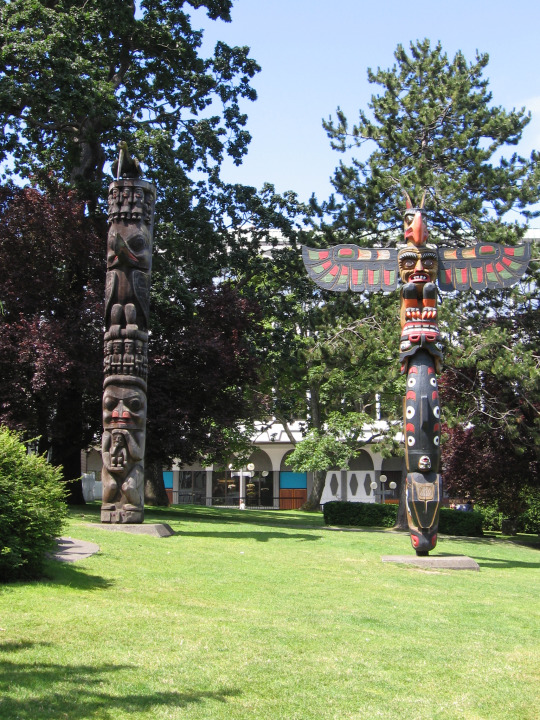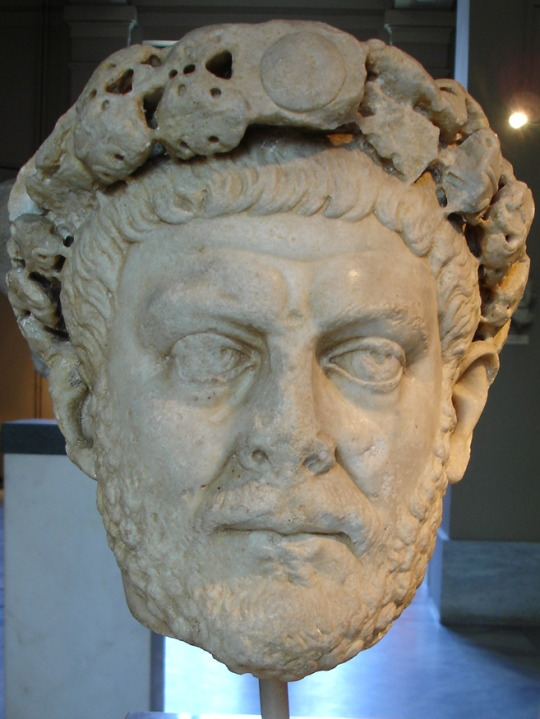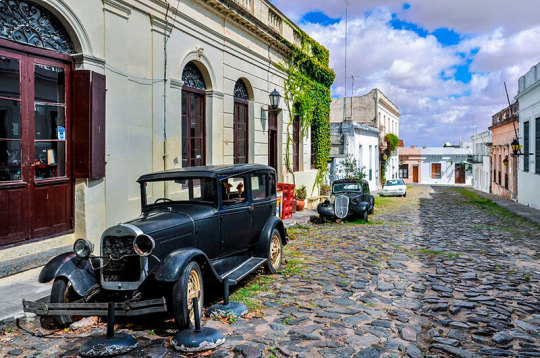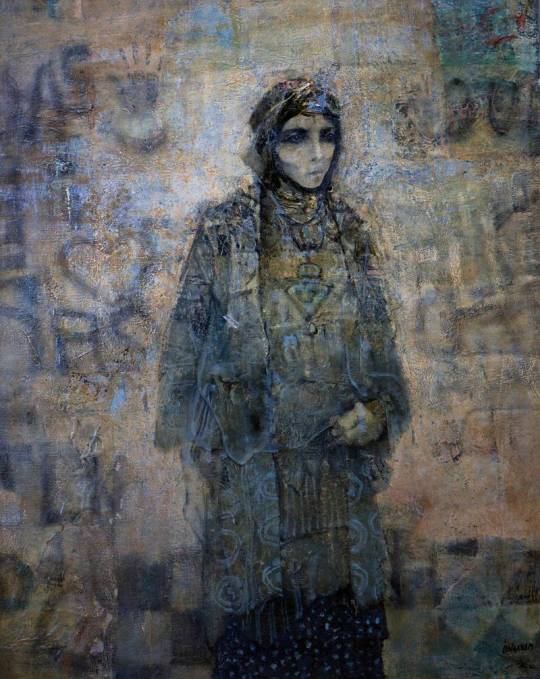Photo

(EN) Life of Pi (2001)
Author: Yann Martel
This surreal novel tells the story of a young Indian castaway and deals with the theme of the multiple versions that can exist about a past event.
(ES) La vida de Pi (2001)
Autor: Yann Martel
Esta surrealista novela narra la historia de un joven naufrago indio y trata la temática sobre las múltiples versiones que pueden existir sobre un hecho del pasado.
12 notes
·
View notes
Photo

(EN) Cambridge’s History of Latin America (1984)
Author: Leslie Bethell
This huge 11-volume project compiles the history of the continent from the first contacts between indigenous people and Europeans, to the present day.
(ES) Historia de América Latina (1984)
Autor: Leslie Bethell
Este enorme proyecto de 11 volúmenes compila la historia del continente desde los primeros contactos entre indígenas y europeos, hasta la actualidad.
4 notes
·
View notes
Photo

(EN) Recommended historical books📜
Invasion to the country of the Chibchas (1966)
Author: Juan Friede
A visionary book about the conquest of the center of what we know today as Colombia, created from an in-depth investigation of primary sources from the General Archive of the Indies.
(ES) Libros historicos recomendados📜
Invasión al país de los Chibchas (1966)
Autor: Juan Friede
Una visión novedosa de la conquista del centro de lo que hoy conocemos como Colombia, creada a partir de una profunda investigación de fuentes primarias del Archivo General de Indias.
6 notes
·
View notes
Photo

(EN) Historic place of the week🏛️
Old Quebec
This colorful historic area of the Canadian city of Quebec has the traces of the city founded by the French explorer Samuel de Champlain in 1608. The historic district still maintains its walls, being the only American city further north than Mexico that still maintains them. In addition to the walls, you can find several historic buildings dating from the 17th to the 20th century, including the Notre-Dame-des-Victoires church, the John Darlington Building, the Quebec City Hall, or the Château Frontenac hotel. The district today is a UNESCO heritage site.
(ES) Lugar histórico de la semana🏛️
Viejo Quebec
Esta colorida zona histórica de la ciudad canadiense de Quebec tiene los vestigios de la ciudad fundada por el explorador francés Samuel de Champlain en 1608. El distrito histórico aún conserva sus murallas, siendo la única ciudad americana más al norte de México que todavía las mantiene. Además de las murallas, pueden encontrarse varios edificios históricos que van desde el siglo XVII hasta el XX, entre los que están la iglesia de Notre-Dame-des-Victoires, el Edificio John Darlington, el Ayuntamiento de Quebec, o el hotel Château Frontenac. El distrito hoy esta declarado como patrimonio de la Unesco.
#Historic Places#history#quebec#samuel de champlain#canada#canadian history#chateau frontenac#old quebec
2 notes
·
View notes
Photo

(EN) Recommended historical film🎬
Bituma 1780 (1995)
Director: Luis Alberto Restrepo
Based on a real case found by Gabriel Garcia Marquez in the General Archive of the Indies, this film tells the story of a corrupt family that ruled the town of Bituima at the end of the 18th century.
(ES) Película histórica recomendada🎬
Bituima 1780 (1995)
Director: Luis Alberto Restrepo
Basada en un caso real encontrado por Gabriel Garcia Marquez en el Archivo General de Indias, esta película narra la historia de una corrupta familia que gobernó o la villa de Bituima a finales del siglo XVIII.
#history#historical film#historical movies#colombian history#colombia#colombian cinema#gabriel garcia marquez#luis alberto restrepo#bituima#bituima 1780
3 notes
·
View notes
Photo

(EN) Historical item of the week⌛️
Totem Pole
Totem poles are carved wood sculptures that can be found in western Canada and western United States. Its name comes from the word odoodem which roughly translates to “ kinship group”in the indigenous Algonquian languages. The Totem poles were created by indigenous communities such as the Haida, Tlingit, Tsimshian, Kwakwaka'wakw, and Nuu-chah-nulth. Totem poles were described by French explorers from the 18th century, but developed in their complex and colorful form in the 19th century, showing complex figures from nature and mythology, being famous especially for representing the legendary Thunderbird. You can find them in various places, such as the Thunderbird Park in Victoria, British Columbia.
(ES) Objeto histórico de la semana⌛️
Pilar Totem
Seguro has visto esto en varias películas. Los pilares Tótem son esculturas talladas en madera que pueden encontrarse en la región occidental de Canadá y Estados Unidos. Su nombre viene de la palabra odoodem que más o menos traduce “clan familiar” en las lenguas indígenas algonquinas. Los Tótem fueron creados por comunidades indígenas como la Haida, Tlingit, Tsimshian, Kwakwaka'wakw y Nuu-chah-nulth. Los Tótem fueron descritos por exploradores franceses desde el siglo XVIII, pero se desarrollaron en su forma compleja y colorida desde el siglo XIX, mostrando figuras complejas de la naturaleza y la mitología, siendo famosos especialmente por representar el legendario Pájaro de trueno. Puedes encontrarlos en varios lugares, como el parque del pájaro de Trueno en Victoria, en la Columbia Británica.
#totem pole#totem#thunderbird#canada#haida#tlingit#tsimshian#kwakwaka'wakw#nuu-chah-nulth#Historical item of the week
4 notes
·
View notes
Photo

(EN) A person from history 🎩
Diocletian (245-311) who was born 1777 years ago today.
One of the most recognized emperors of the Roman Empire, who managed to recover it after one of his deepest crises. Diocletian was born as Diocles and came from a low-ranking family in the province of Dalmatia. In his youth he joined the army, and over the years he rose through the ranks to become one of the commanders of Emperor Caro's army. After his death in war with the Persians, Diocles was declared emperor by the troops. And though he had to fight for the title with one of Caro's sons, he ultimately established himself as ruler of the empire. Diocletian ended the crisis of the 3rd century by instituting political reforms, the most famous being the so-called Tetrarchy, where Diocletian appointed a co-emperor to rule the western part, while he ruled the eastern part. Likewise, two "junior" emperors were named to be designated as successors. Diocletian also organized the last and greatest persecution of Christians, which failed in the end. The emperor abdicated the throne in 305, and devoted himself to gardening until his death.
(ES) Un personaje historico 🎩
Diocleciano (245-311) que nació hoy hace 1777 años.
Uno de los emperadores mas reconocidos del Imperio Romano, que logro recuperarlo tras una de sus más profundas crisis. Diocleciano nació con el nombre de Diocles y provenía de una familia de bajo rango de la provincia de Dalmacia. En su juventud se unió al ejército, y con el paso de los años subió de rango hasta convertirse en uno de los comandantes del ejercito del emperador Caro. Tras la muerte de este en guerra con los persas, Diocles fue declarado emperador por las tropas. Y aunque tuvo que luchar por el titulo con uno de los hijos de Caro, al final se estableció como gobernante del imperio. Diocleciano finalizo la crisis del siglo III instituyendo reformas políticas, siendo la mas famosa la llamada Tetrarquía, en donde Diocleciano nombro un co-emperador para gobernar la parte occidental, mientras el gobernaba la oriental. Así mismo se nombro dos emperadores “junior” que serian designados sucesores. Diocleciano organizo así mismo la ultima y más grande persecución de cristianos, la cual fracaso al final. El emperador abdicó el trono en el 305, y se dedico a la jardinería hasta su muerte.
#history#a person from history#diocletian#roman emperor#roman empire#rome#300s#4th century#3th century#200s#roman history#dalmatia
2 notes
·
View notes
Photo

(EN) Historic place of the week🏛️
Colonia de Sacramento
This historic town is one of the oldest cities in Uruguay. It was founded in 1680 by Portuguese settlers. The city changed hands between Spain and Portugal for years, until the country's independence in 1828. The old town, which blends Portuguese and Spanish colonial styles, was added in 1995 to the UNESCO heritage list.
(ES) Lugar histórico de la semana🏛️
Colonia de Sacramento
Este poblado histórico es una de las ciudades mas antiguas de Uruguay. Fue fundada en 1680 por colonos portugueses. La ciudad cambio de manos entre España y Portugal por años, hasta la independencia del país en 1828. El casco histórico, que fusiona los estilos coloniales portugueses y españoles, fue agregado en 1995 al listado de patrimonios de la UNESCO.
#history#historic places#colonia de sacramento#uruguay#1600s#colonial architecture#world heritage place#unesco#history of uruguay#17th century
2 notes
·
View notes
Photo


(EN) A fact from history 📜
At the end of the 20th century there were two supersonic commercial airplanes that entered into competition: the famous Concorde, launched in 1976 by France and the UK; and the Tupolev Tu-144, launched by the Soviet Union. Both ships had quite a few operational and safety problems, with catastrophic accidents for each. The Tupolev was retired in 1983 and the Concorde in 2003.
(ES) Un dato historico curioso📜
A finales del siglo XX hubo dos aviones comerciales supersónicos que entraron en competencia: el famoso Concorde, lanzado en 1976 por Francia e Inglaterra; y el Tupolev Tu-144, lanzado por la Unión Soviética. Ambas naves tuvieron bastantes problemas de operación y seguridad, con accidentes catastróficos para cada uno. El Tupolev fue retirado en 1983 y el Concorde en 2003.
#a fact from history#20th century#concorde#tupolev tu-144#tupolev#soviet union#france#french history#soviet history#british history#supersonic plane#history
5 notes
·
View notes
Photo

(EN) Historical item of the week⌛️
The woman and the wall
This painting, created in 1978 by Algerian artist Mohammed Issiakhem, depicts Algeria's anti-colonial resistance against France in the 1960s. The woman, dressed in Amazigh or Berber attire, stands in a sad and defiant pose in front of a wall painted with initials of the Algerian resistance armies such as the OAS and the FLN. The painting is in the Barjeel Art Foundation in Sharjab, United Arab Emirates.
(ES) Objeto histórico de la semana⌛️
La mujer y la pared
Esta pintura creada en 1978 por el artista argelino Mohammed Issiakhem, representa la resistencia anticolonial de Argelia en contra de Francia en la década de los 60. La mujer vestida con un atuendo Amazigh o bereber, se encuentra en una pose triste y desafiante frente a una pared pintada con siglas de los ejércitos de resistencia argelinos como el OAS y el FLN. La pintura esta en la Fundación de Arte Barjeel en Sharjab, Emiratos Árabes.
#algeria#historical item#mohammed issiakhem#amazigh#berber#amazigh woman#the woman and the wall#algerian art#barjeel art foundation#20th century#1970s
4 notes
·
View notes
Photo

(EN) This day in History 📆
December 15, 1961
Adolf Eichmann is sentenced to death
Following one of the most publicized trials in history, on this day the Israeli Supreme Court sentenced Nazi officer Adolf Eichmann to death. Eichmann had been captured months before in Argentina, after several years of having escaped after the end of the war. Eichmann was accused of being one of the main architects of the Holocaust, his arguments being studied by philosophers such as Hannah Arendt, who coined the term "the banality of evil" from this case.
(ES) Un día como hoy📆
15 de diciembre de 1961
Adolf Eichmann es sentenciado a muerte
Tras uno de los juicios mas publicitados de la historia, en este día la corte suprema israelí condenó a muerte al oficial nazi Adolf Eichmann. Eichmann había sido capturado meses antes en Argentina, tras varios años de haber escapado tras el fin de la guerra. Eichmann fue acusado de ser uno de los principales arquitectos del holocausto, siendo sus argumentos estudiados por filósofos como Hannah Arendt, quien acuño a partir de su caso el término de “la banalidad del mal”.
#history#european history#israel#argentina#world war 2#hannah arendt#banality of evil#1960s#20th century
4 notes
·
View notes
Photo

(EN) Historic place of the week🏛️
Al-Qal'a of Beni Hammad
This fortress located in the mountains of northern Algeria was the first capital of the Hamadite emirate, a Muslim Berber kingdom that dominated the area in the Middle Ages. The city was founded in 1007 by the emir Hammad ibn Bologhin, and became one of the most prosperous in North Africa, with a mosque that is still one of the largest in the region. The city was unfortunately abandoned in 1152, and today only its ruins remain.
(ES) Lugar histórico de la semana🏛️
Al-Qal'a de Beni Hammad
Esta fortaleza ubicada en las montañas al norte de Argelia fue la primera capital del emirato Hamadita, un reino bereber musulmán que domino la zona en la edad media. La ciudad fue fundada en 1.007 por el emir Hammad ibn Bologhin, y se convirtió en una de las más prosperas del norte de África, con una mezquita que es aun una de las más grandes de la región. La ciudad lamentablemente fue abandonada en 1.152, y hoy solo quedan sus ruinas.
#history#historia#argelia#hamadite#muslim art#muslim architecture#middle ages#hammad ibn bologhin#northern africa#mosque#1100s#1000s#11th century#12th century#africa#african history#Al-Qal'a of Beni Hammad
4 notes
·
View notes
Photo

(EN) Did you know?🤔
There were at least five temples dedicated to the goddess Artemis in the city of Ephesus, all of which were considered architectural marvels in her time.
Watch this and more in our YouTube video:
"The Story of the Temple of Artemis".
Link: https://youtu.be/Gmre11I46dg
Art by Thorinds
(ES) ¿Sabías qué?🤔
Hubo al menos cinco templos dedicados a la diosa artemisa en la ciudad de Éfeso, todos fueron considerados maravillas de la arquitectura en su tiempo.
Mira esto y mas en nuestro video de YouTube:
"La historia del Templo de Artemisa".
Link: https://youtu.be/Gmre11I46dg
#history#historia#history art#temple of artemis#seven wonders of the world#artemis#artemision#ephesus#ancient greece#4th century bce#greek art#greek temple#turkish history#greek history
11 notes
·
View notes
Photo

(EN) Historical item of the week⌛️
The Foot of Zeus
This fragment of a colossal statue of the Greek god Zeus sculpted around the 3rd century BC, may have belonged to a copy of the famous statue at Olympia. The foot was found in the temple of the god located in the archaeological site of Ai Khanoum, present-day Afghanistan. Alexandria Oxiana, was located there, one of the cities founded in the Greek expansion through Asia after the conquest of the Persian empire. Today it can be seen in the National Museum of Afghanistan in Kabul.
(Es) Objeto histórico de la semana⌛️
El pie de Zeus
Este fragmento de una estatua colosal del dios griego Zeus creada sobre el siglo III AC, quizá pertenecía a una copia de la famosa estatua de Olimpia. El pie fue encontrado en el templo del dios ubicado en el sitio arqueológico de Ai Janum, actual Afganistán. Allí se ubicaba Alejandría de Oxo, una de las ciudades fundadas en la en la expansión griega por Asia tras la conquista del imperio persa. Hoy puede verse en el Museo Nacional de Afganistán, en Kabul.
#history#historia#zeus#foot of zeus#ai khanoum#alexandria oxiana#afghanistan#national museum of afghanistan#kabul#3rd century bce#asian history#afghanistan history#greek history
26 notes
·
View notes
Photo

(EN) Historic place of the week🏛️
Haghpat Monastery
This Christian monastery complex, built between the 10th and 13th centuries in the mountains of northern Armenia, is one of the masterpieces of medieval religious architecture of the Armenian Apostolic Church. Built with the support of medieval Armenian royalty, the complex became one of the main centers of learning in the Caucasus region. Although it has been damaged by earthquakes over the centuries, it remains almost intact to this day.
(ES) Lugar histórico de la semana🏛️
Monasterio de Haghpat
Este complejo monasterio cristiano construido entre los siglos X y XIII en las montañas al norte de Armenia, es una de las obras maestras de la arquitectura religiosa medieval de la Iglesia Apostólica Armenia. Construida con el apoyo de la realeza armenia medieval, el complejo se convirtió en uno de los principales centros de aprendizaje de la región del Cáucaso. Aunque ha través de los siglos ha sufrido daños por terremotos, se mantiene casi intacta hasta la actualidad.
#history#historia#monastery#armenia#haghpat monastery#armenian art#armenian architecture#caucasus#christian art#chistian architecture#ortodox christian art#medieval history#armenian history
5 notes
·
View notes
Photo

Recommended historical books📜
1. Essays in Social History (1968)
Author: Jaime Jaramillo Uribe
This compilation of essays by the historian of the “New History of Colombia”, show the various social problems that have occurred in the history of the country.
Libros históricos recomendados📜
1. Ensayos de historia social (1968)
Autor: Jaime Jaramillo Uribe
Esta compilación de ensayos del historiador de la Nueva Historia de Colombia, dan muestra de los diversas problemáticas sociales que se han dado en la historia del país.
2 notes
·
View notes
Photo

Historical item of the week⌛️
Onufri Icons
This is one of the richest collections of Orthodox religious icons in Europe. They were created by the Albanian artist Onufri Argitis, who painted them during the 16th century using fresco and tempera on wood. Today most of these icons can be seen in the Onufri Iconographic Museum, located in the city of Berat, Albania.
Objeto histórico de la semana⌛️
Iconos de Onufri
Esta es una de las colecciones mas ricas de iconos religiosos ortodoxos en Europa. Fueron creadas por el artista albano Onufri Argitis, quien las pinto durante el siglo XVI en técnica de fresco y tempera sobre madera. Hoy la mayor parte de estos iconos pueden verse en el Museo Iconográfico de Onufri, ubicado en la ciudad de Berat, Albania.
4 notes
·
View notes